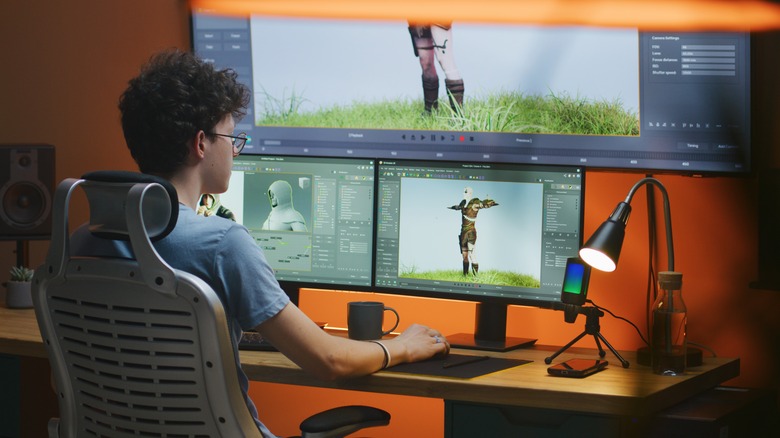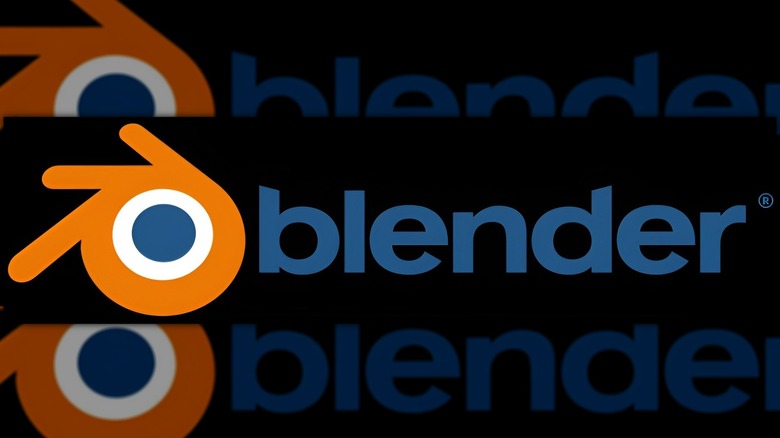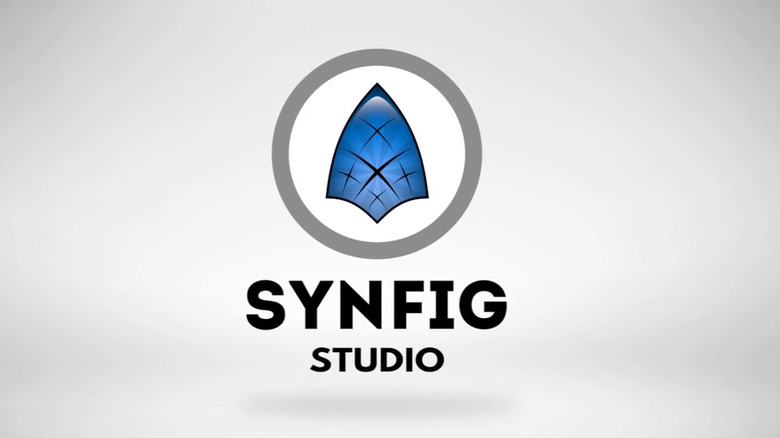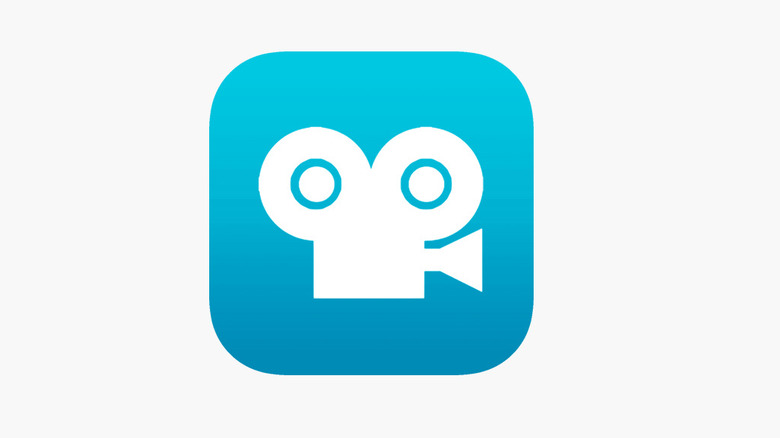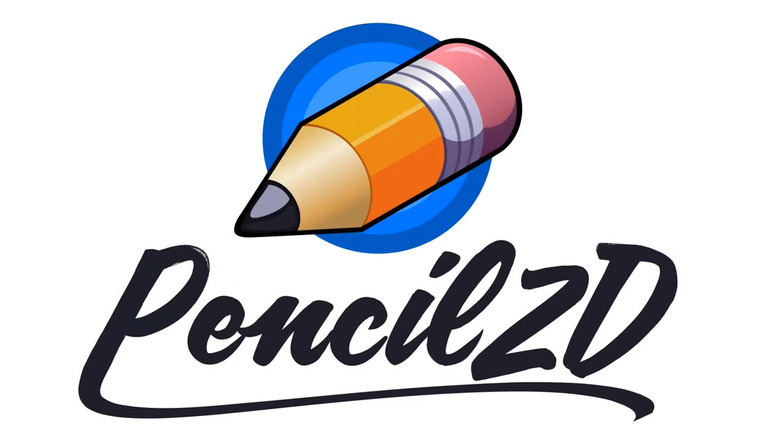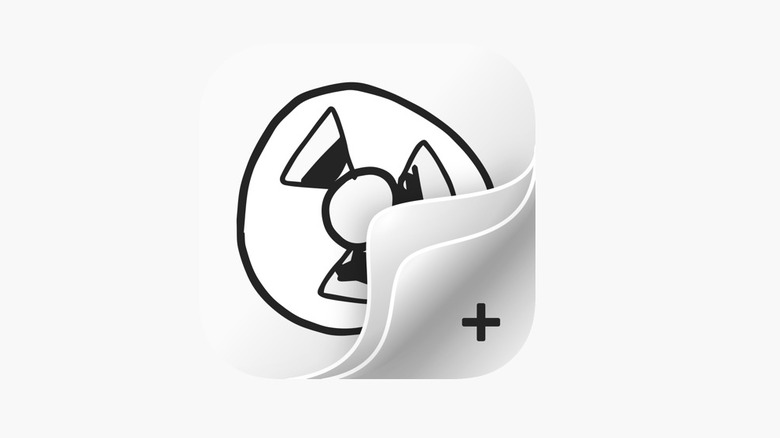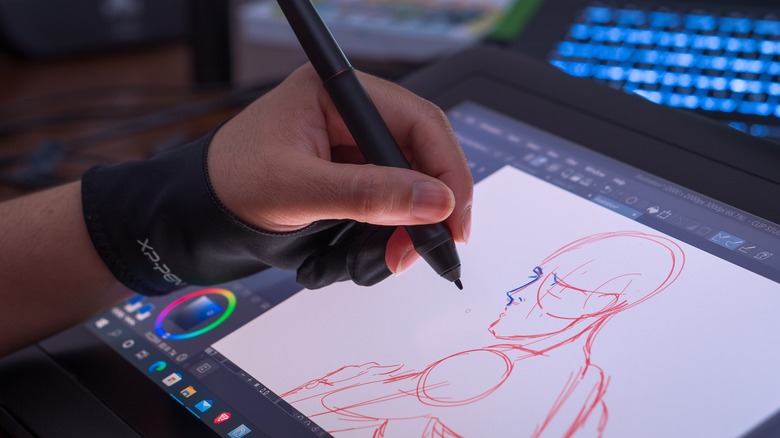5 Free Programs To Get You Started In Animation
Animation has come a long way since the days of Walt Disney. Not very long ago, creating high-quality animation would have required massive studio spaces, large teams, and loads of money. And while movies such as "Spider-Man: Across the Spider-Verse" and "Inside Out 2" still require more resources and manpower than most of us have access to, you'd be surprised with how easy it is to get started on your animation journey.
The technology needed to craft animation, whether it's 2D, 3D, or stop motion often only requires an up-to-date computer, tablet, or even smartphone to get you going. On top of that, with the demand for animated content across various platforms increasing at a rapid rate, the process of creating animation has become drastically streamlined over the years to a point that it's completely feasible for a single person to be at the helm of an entire animated project.
Yet, depending on your budget or level of experience, diving into one of the bigger programs may not be the smartest move. While industry-standard software such as Autodesk Maya, ToonBoom Harmony, and Adobe Animate are relatively easy to find and download, many of them come with hefty subscription plans. If you're just getting started in animation, it's wiser to hone in your skills rather than worrying about having the fanciest software out there. Thankfully, similar to video editing, there are plenty of budget-friendly software options for beginners.
Blender gives paid 3D options a run for their money
Fully free 3D software options are admittedly pretty sparse. Programs such as Cinema 4D and even Autodesk Maya offer free trials, while a program like Daz 3D is a bit on the basic side of features. Thankfully, Blender has more than enough to satisfy the needs of seasoned pros and beginners alike, all while being entirely free of charge.
Blender is a powerful open source platform that allows for a wide range of functions, with practically everything required for the production pipeline. It contains high-quality modeling and digital sculpting tools with real-time feedback to further streamline the process. You can then rig and animate your characters using the character pose editor and even draw over poses with the Grease Pencil feature. You can also polish your project by adding VFX and simulations, sound, color grade, and more in post production with Blender.
This barely scratches the surface of the technical and artistic feats that have been achieved with Blender, which you can see on full display with the Blender Open Movies, a series of short films of varying styles all made with the program. Keep in mind if you're a beginner, however, that there is a steep learning curve to get over, largely due to the software using node-based animation as opposed to the more traditional layer-based programs. Thankfully, there's no shortage of YouTube tutorials out there that can guide you along your path, no matter your experience level.
Synfig Studio helps you get started with 2D rigging
Chances are when you think of 2D animation, you visualize talented draftsmen laboring for hours on end creating drawing after meticulous drawing. While this is still a method practiced, most 2D animation today is accomplished using rigging and puppeting techniques to individually manipulate a character's features as opposed to going about it frame by frame, saving loads of time. While paid programs such as ToonBoom Harmony are most renowned for this, there is a free gateway into the modern age of 2D animation with the software Synfig Studio.
Synfig allows for the creation of vector and bitmap-based 2D animation with a variety of functions made to enhance control. After drawing out your character, you can use the program's bone system to section out and rig their body with control points, which you can then keyframe to get your animation. The feature is surprisingly versatile, whether you're trying to get across simple head or body movements or seeking to create somewhat more intricate character animation. Additionally, you can tap into Synfig's facial control functions to allow for talking and lip sync.
This is another program that might take beginners a little time to get used to, so it's perhaps best to dive into this one after learning the bare bone animation basics. However, for those ready to take their skills up a step or two and dive into 2D puppeting, Synfig is a multifaceted, risk-free way to get your hands dirty.
Stop Motion Studio brings a time-tested art form to the modern day
Stop motion animation has been around as long as film itself, with the earliest examples dating all the way back to the late 1800s. The technique's tactical quality harbors a unique appeal, with movies and specials such as "Rudolph the Red Nosed Reindeer," "Chicken Run," "Fantastic Mr. Fox," and "Coraline," among countless others, remaining time-tested fan favorites.
It's perhaps the easiest animation medium to get involved in, as it forgoes many of the technical hurdles that come with animating in 2D or 3D, only requiring a simple table setup and an inanimate object you're willing to move about. Best of all, the tool needed to create high-quality stop motion is in the palm of your hand thanks to the versatile smartphone app, Stop Motion Studio.
Stop Motion Studio offers an easy-to-use interface that's jam-packed with features. You can connect it to your phone or tablet's camera and adjust the ISO, white balance, shutter speed, and more. Once you've adjusted your smartphone to take the best images possible, you can capture your animations. What's cool is that you can playback your progress, and when you're done, the app even allows you to alter the frame rate and perform edits by adding music, titles, transitions, and even simple 2D animation. While a paid version of the app does exist, the free version offers more than enough to appease the needs of the majority of users.
Pencil2D Animation is great for classic animation fans
While 2D puppet animation is an undeniably desirable skillset, there's no denying the appeal of traditional frame by frame animation. Even 3D animators can benefit from starting off using traditional 2D, as this is the best and most thorough way to learn the important animation principles. Pencil2D Animation is a straightforward way to dive into this, allowing you to create 2D animation of your own easily and for free.
Pencil2D has a simple interface that lets you draw, alter, and check the progress of your frames with ease. You're not only bound to creating simple line drawings, however, as Pencil2D allows for versatile color options as well as the ability to add camera moves and lighting effects to enhance your animations. There are multiple adjustment options to make your workspace suit you best, including support for raster and vector workflows to better accommodate the quality of your specific layers, toolbar customization to keep better track of your brushes and other items, and a variety of video and imagery export settings.
For those seeking a more advanced option, you won't find much here as its tool selection might be frustratingly limiting. Still, Pencil2D is a great option for those looking to go beyond animating on a phone or tablet who don't have the budget for a paid 2D program.
Flipaclip let's you make and share 2D work from your smartphone
Think you need an expensive drawing tablet to get started in 2D animation? Think again. While paid iPhad art apps such as Procreate are popular choices, Flipaclip has garnered its own special reputation as a great frame-by-frame 2D animation app with strong community aspects. It's simple interface and fun features make this a great pick for newcomers to animation.
As its name implies, Flipaclip is made to replicate the fun of classic animation flip books and certainly delivers on that aspect. It's a straightforward program, allowing you to draw each frame directly on your screen and playback functions to keep track of your progress. You also have the option of drawing or putting in backgrounds, onion skinning to better guide your drawings, and customizing your drawing tool. Afterwards, you can change up your animation's frame rate and export it as an MP4, GIF, or PNG sequence. Flipaclip has a keen interest in engaging with its community, with tutorials, templates, and contests galore.
The free version of Flipaclip limits the use of some of its more advanced brush and imagery features, and your videos will have a small watermark in the corner once exported. Nevertheless, the free version is still a desirable app for learning the basic principles of animation.
Why we chose these animation programs
I work as a professional stop motion animator and have had experience with both 2D and 3D animation during my tenure at the Savannah College of Art and Design. This, along with suggestions from close colleagues working professionally in the industry, are what primarily influenced the picks on this list. Of course, I sought out additional sources from platforms such as Reddit and Oberlo to see if there were any programs I missed.
My goal in choosing these programs was to find options that could help develop tangible industry skills. Many free programs offer little more than a couple of cheap preset character and background assets that get frustratingly generic. True, much of the software on this list isn't quite as dynamic as the industry-standard alternatives, but they're darn close. Ultimately, I wanted these picks to be ones where you could go in and create a quality project from scratch, as that's the best way to truly learn and find your style as an animator.
No matter the medium you want to work in or the technology you have at your disposal, there's likely something on this list that you can download and start using today. At the end of the day, what you know is far more crucial than what you're using, as the skills you learn on these programs will benefit you as you move on to more advanced projects down the line.
